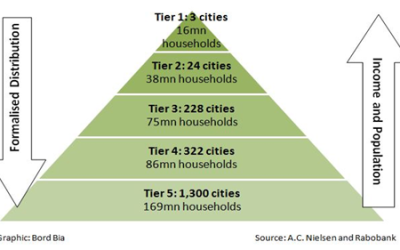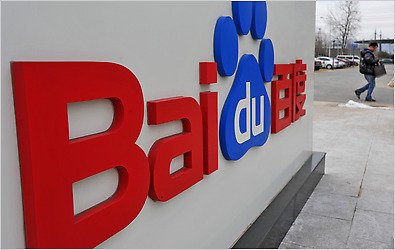Our China Blog
China’s City Tier System
We often hear about cities in China in the context of a specific tier but what does it actually mean? What implications city’s tier would have on its population’s consumer behavior or availability of business opportunities?
First of all, even though the tier system has been designed by Chinese government it is still open to interpretation. Second of all, beyond 1st tier cities designation, there is much less consensus about which cities belong to 2nd, 3rd and 4th tiers. read more…
4Ps of Chinese Marketing Mix in B2B context: #2 Place
Continuing on the topic of 4Ps of marketing (Product, Price, Place and Promotion) in Chinese market context, today’s post is about the Place components. The Product element was discussed in my earlier post here.
Almost every marketplace is defined geographically and going after the largest market or the one offering the most opportunities is one of the main priorities of any marketing strategy. Since China is a huge country that has been developing so rapidly, various areas differ significantly in terms of development level, income or population size. read more…
7 Reasons Why Luxury Brands Should Expand to Inland China
As of middle of 2013, Chinese ecommerce market is estimated to have surpassed that of the US to become the largest online shopper market in the world. In particular, the luxury goods market has been enjoying explosive growth reaching 18.9 billion RMB in 2012. The sales have been steadily growing in the 1st tier cities, such as Beijing and Shanghai, however there is a tremendous unmet demand in the lower tier cities.
Luxury brands have been somewhat slow moving to those markets unwilling to commit read more…
8 Factors Affecting Retail Marketing Strategies for International Brands in China
Almost every international brand can be found in China nowadays with some achieving unprecedented success while others still remain barely known. What factors determine success or failure of those brands? Which marketing strategies work and which don’t and why? What exactly should be taken into account in order to make a successful market entry? The right answers to these questions make the whole difference between stellar success and miserable failure of a brand.
One of the most interesting studies on this subject was conducted read more…
Pay-Per-Click Campaigns in China
Pay-per-click (PPC) advertising is one of the fastest ways to reach your Chinese customers but setting up and conducting efficient PPC campaign requires understanding of how it works. I’m going to clarify the main points and highlight the differences with the more familiar PPC setup for Google.
First of all, Baidu.com is by far the most poular search engine in China with somewhere between 60 to 80% of the search engine market. With Google at only around 3% and Yahoo with Bing at ~0.5% each of the entire market, Baidu is clearly a place to be for a business seeking to reach Chinese audience. read more…
IP Protection in China: What You Should Know Before Entering the Market
Following the discussion on trademark registration issues in China, I’d like to look into patents this time. Every company should take great care to protect their intellectual property but, arguably, this issue is even more pressing in China.
The reason is plain and simple – along with being the main world manufacturer of pretty much everything, China has also become the center of thriving copying industry. Everything is being copied in China nowadays – from snickers and smartphones to industrial machinery and hotel brands. Every company that achieves any degree of success locally is in danger of having their technology reverse-engineered, reproduced and sold at lower cost domestically. read more…
4Ps of Chinese Marketing Mix in B2B context: #1 Product
One of the four components of 4Ps of marketing is the Product with the others being Price, Place and Promotion. In this post, I will look into specific considerations for this aspect of marketing that have to be taken into account in the case of doing business in China.
The central concept of the “product” element of the 4Ps is the idea of designing and selling the right product, the one that already has or will have its place in the market. Of course, in some situations, a unique product creates its own market but those would be very rare and unique circumstances. One example of such product is an iPad – the gadget that has spawn its own market once it was launched. read more…
Trademark Protection in China, Part 2: Language
Continuing on the topic of trademark and brand protection from my previous post, I’m going to discuss the issue of registering your brand in the native language which is Simplified Chinese in Mainland China.
If you are planning to establish a long term presence in Chinese market it is advisable to start thinking about Chinese equivalents of your company’s name and other trademarks. This can be tricky as a simple translation or phonetic transliteration of your brand name may not work well enough locally. read more…
Key Perception Factors About Western Companies in China
In order for a Western company to be successful in selling its products or services in China it has to better understand a typical Chinese perception of Westerners. This would allow them to take advantage of certain positive perception factors and, at the same time, mitigate a number of negative aspects.
I’m going to examine such perception factors and the most efficient ways to deal with them. read more…
Infographic: Chinese Social Media Equivalents
It is a well known fact that practically every major social networking site has its equivalent in China. Since social media marketing is quickly becoming one of the principal components of an integrated marketing plan, it’s important to know what those alternative services are . This should also help you decide whether they should be incorporated in your marketing strategy for the Chinese market.
The following infographic displays and classifies this information which I find quite useful (click to open in a new tab): read more…
Common Mistakes by Western Companies Dealing with Chinese Businesses
Large number of Western companies who are engaged in selling capital equipment to Chinese businesses don’t realize the fact that the purchase cycle is usually quite different from what we are used to in the West.
A typical purchase cycle by a typical American or European company is a structured and accurately defined and documented process that can be broken down to the following distinct stages:
- The need is identified and the requirement is raised;
- Spec is prepared; read more…
B2B Marketing: the 4Ps in China
Every MBA student or anyone familiar with marketing basics has at least heard about the concept of 4Ps of marketing which are:
- Product;
- Price;
- Promotion;
- Place;
Western companies typically run their marketing based on those four principles as an integrated effort. Since Chinese economy started to truly open up to the West only from the mid 80s, not surprisingly, the vast majority of Chinese companies haven’t reached the same level of sophistication and still view marketing only as a single P – Promotion. read more…
SEO in China, Part 2: Baidu Optimization
In this post I continue to look into SEO for Baidu and how it differs from more familiar Google-based optimization.
SEO for Baidu is not just a one time job but, just as in the case of Google, is a continuous effort. Algorithms and weights of various factors change all the time and, in a way, Baidu seems to be following Google’s logic, although with a considerable delay.
Of course, since Baidu targets Chinese audience, it has its own way of doing things in order to stay more relevant both geographically and linguistically. Since Baidu accounts to up to 70% of Chinese search engine market it’s important to understand how it assigns ranking, what factors are considered important and what could be harmful. read more…
Infographic: Search Engine Usage in China
Here is the excellent infographic explaining Chinese search engine market in China and the ways Chinese use internet in general compiled by Go-Globe.com.
Interesting numbers that I find quite illuminating: Google accounts for barely over 3% of all the searches in China with Yahoo and Bing hovering just around half percent.
Notice the stats on the mobile searches growing at 94% rate compared to 20% rate decline in desktop based searches.
Scroll down the map to see more interesting data. read more…
SEO in China, Part 1: Baidu
If you plan to market your products and services directly to Chinese consumers it is essential to have your site listed in Baidu, China’s number one search engine. By various estimates, 60-70% of all searches in China are done via Baidu and having your site achieve high ranking there should become an important part of your marketing strategy.
In this post, I’ve pulled in some resources on how to improve your ranking and what factors affect your site’s placements in the search results. read more…
Infographic: Chinese Online Retail Market vs. US
In 2013, Chinese online retails market is set to pass that of US by total sales numbers. Most ecommerce in China is conducted on Taobao.com (C2C) and Alibaba.com (mostly B2B) which both belong to the same Alibaba group. Up until Jan 2013 it was headed by the famous Chinese entrepreneur Jack Ma. Alibaba group is also expected to go public in either US or Hong Kong, the step which is most likely spell further development of ecommerce in China and beyond.
Some time in 2014, the ecommerce sales are set to cross $300 billion benchmark and reach an estimated level of $348 billion by the end of that year. read more…
B2B vs. B2C Marketing in China
The differences and similarities between B2B (business to business) and B2C (business to consumers) marketing have been thoroughly and extensively discussed in the past. However, in the last few years, this topic became even more hotly debated in light of new social media tools available to marketers nowadays.
I’d like to take some time to examine some of those differences and similarities with the focus on B2B from the perspective of marketing in China.
Decision makers
The most often mentioned principal difference between B2C and B2B is the number of individual decision makers involved. read more…
B2B Sales Force: Four Types of Chinese Salesman
One of the biggest challenges every Western companies faces in China is finding and retaining qualified local sales force. Highly efficient salespeople are in constant demand in the Middle Kingdom and are hard to come by. Here I examine the four types of a typical Chinese salesperson, which are based on my own experience and observation.
The Big Shot
By far, the most common type 10-12 years ago in China, the “big shot” is typically a male in his 40-50s, characterized by a typical demeanor of an all-knowing VIP who expects universal respect and admiration. read more…




















